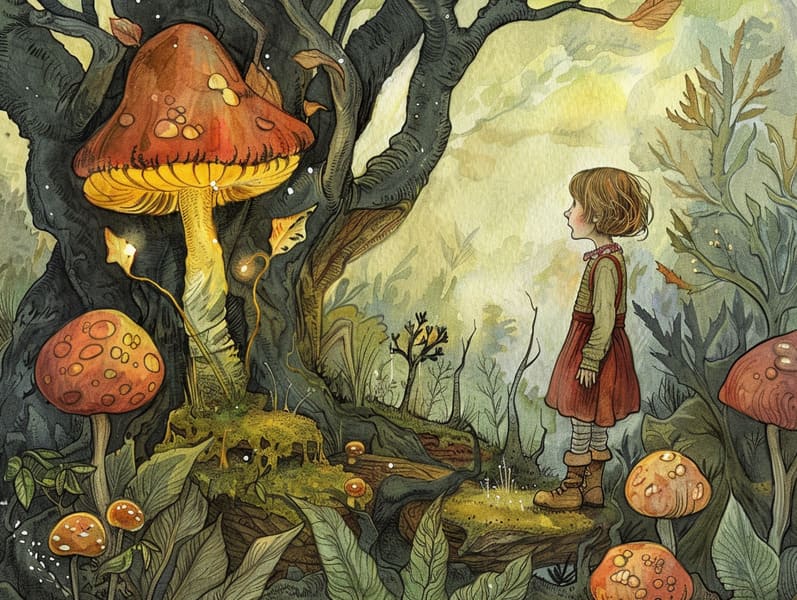A Brief History of Legendary Fairy Tales with the Invariable Majesty.
A Brief History of Legendary Fairy Tales with the Invariable Majesty.
Blog Article

Grimm's fairy tales have deep roots. These tales have been told from one generation to the next far before they were ever transcribed. They emerged from a variety of traditions, including African traditions. They were initially conveyed among grown-ups, often carrying themes and messages reflective of the societal norms and beliefs of the time.
The Brothers Grimm, Jacob and Wilhelm, were among the first to compile many of these beloved fairy tales. Their collection, "Grimm's Story Collection," included narratives like "Cinderella," "The Story of Hansel and Gretel," and "The True Story of Snow White," which have since become staples in the world of famous fairy tales. Similarly, Hans Andersen's fantastical stories, such as "The Sea Maid," and "The Little Duckling," have floated into hearts worldwide, cementing their place in the pantheon of famous fairy tales.
Though they are old, these tales remain as relevant as ever, especially as children's night stories. These whimsical stories are now available in multiple formats, including beautifully illustrated books, whimsical animations, and web-based fairy tales.
Their lasting presence can be linked to several captivating elements:
Crucial Morals: Old fairy tales often whisper important moral lessons. Stories like "The Boy Who Cried Wolf" teach the merit of integrity, while "The Story of the Tortoise and the Hare" underline the values of tenacity and humbleness. These stories offer kids clear distinctions between right and wrong, helping to shape their moral compass in a tender yet lasting way.
Empathy and Awareness: Fairy tales frequently showcase personalities facing problems and hurdles, motivating children to sympathize with their struggles and cheer for their triumphs. For instance, "The Story of Beauty and the Beast" highlights the merit of seeing beyond looks to comprehend the inner being of a person, strengthening compassion and appreciation.
Cultural Appreciation: Many timeless fairy tales are saturated in the cultural contexts from which they grew. Understanding these narratives can provide intriguing perspectives into different historical contexts, developing a sense of cultural understanding and respect.
Inventiveness and Imagination: The whimsical elements in traditional fairy tales—wizardry and magic—motivate children’s innovations. These stories guide readers to extraordinary realms, unleashing fantasy-filled thoughts and a sense of magic that persists a lifetime.
Ancient fairy tales are not only fascinating but also illuminating. They provide delightful tools in nurturing various thinking and feeling skills in young ones. When ancient fairy tales are read aloud, they cultivate speech development by bringing new language and intricate sentence structures. This practice also promotes listening abilities and attention, as the young track the narrative, looking forward to see what happens next.
Furthermore, talking about the themes and characters of ancient fairy tales can promote analytical skills and intellectual skills. Young readers are instructed to identify patterns, expect results, and figure out cause and effect. These talks also support kids voice their thoughts and feelings, boosting their emotional intelligence.
In today’s modern era, the prevalence of web-based fairy tales has made these tales more within reach than ever. Web-based platforms and digital apps extend ample collections of children's fairy tales that can be enjoyed or listened on anytime, anywhere. Fairy tales told out loud are particularly well-received, providing an engaging way for young readers to be a part of these charming tales. Read-aloud stories and read-out-loud stories guide characters and settings to life, often complemented by captivating melodies and instrumentals that boost the story journey.
The timeless fascination of timeless fairy tales lies in their ability to change to new eras while holding onto their underlying messages. Contemporary revisions of these tales often include more different figures and modern settings, making them familiar to today’s audience. However, the fundamental themes of gallantry, warmth, and rightness remain unchanged, continuing to influence audiences of all ages.
Ancient fairy tales also offer a sense of ease and homeliness. They afford a structured narrative with a plain beginning, middle, and end, often concluding with the conclusion of conflicts and the triumph of good over evil. This dependability can be consoling for the young, giving a sense of sturdiness in an unpredictable world.
Classic fairy tales continue to mesmerize and train new generations, maintaining their magic and importance in modern society. As bedtime stories for kids, they feature a perfect blend of wonder and wisdom, developing moral values, empathy, and creativity. The existence of web-based fairy tales and the in demand status of fairy tales spoken validate that these classic narratives remain reachable to new generations.
By protecting and disseminating these stories, we continue to esteem the rich tapestry of fantasy and cultural heritage. Whether you are exploring a vividly illustrated book, exploring a electronic collection, or listening on an audiobook, the grandeur of old fairy tales is always within reach. These tales demonstrate of the unceasing ability of stories and its ability to bond us across centuries find it here and lands.
Even if you are seeing a vibrantly illustrated book, discovering a web-based collection, or listening through an voice book, the enchantment of children's fairy tales is always within reach.
These narratives illustrate of the lasting power of fairy tales and its ability to connect us across generations and cultures, forming a connection that fascinates and enlightens alike.